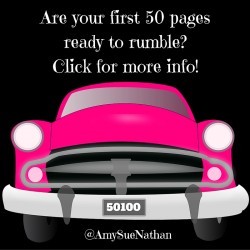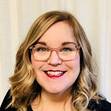Amy Sue Nathan's Blog: Women's Fiction Writers, page 18
April 4, 2016
Guest Post: The Book Widows Are Minding The Gap — The Gender Reading Gap
“What are you reading?” It’s a question authors are asked all the time. It’s a question non-writers are asked all the time. Do the answers ever surprise you? Do you assume what someone will and won’t read based on gender? I know I do. I stopped apologizing for what I write, that my books likely appeal to women more than me. I’m okay with that. I’m not only okay with it, it’s intentional. But, do you ever wonder why there is a gap in reading preferences?
The Book Widows did.
Read on to discover their findings, and to find out more about them!
Amy xo
The Gender Reading Gap
The Book Widows’ Perspective on Reading Differently
by Rona Simmons
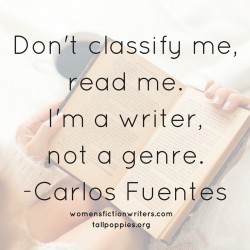 There we were, white wine in hand, at a literary event. Four women authors of a cross section of genres, each happily married and yet not a husband in sight. We laughed and cried and shared that our husbands seldom read books, rarely novels, and not the stories we write. While not unhappy about the latter (who wants a live-in literary critic anyway), we wondered aloud if we were unique. After dubbing ourselves “book widows,” we set out to explore the reading gender gap. Do men and women read differently? If so how and why? And, could or should we do something about it?
There we were, white wine in hand, at a literary event. Four women authors of a cross section of genres, each happily married and yet not a husband in sight. We laughed and cried and shared that our husbands seldom read books, rarely novels, and not the stories we write. While not unhappy about the latter (who wants a live-in literary critic anyway), we wondered aloud if we were unique. After dubbing ourselves “book widows,” we set out to explore the reading gender gap. Do men and women read differently? If so how and why? And, could or should we do something about it?
Was it simply that women read more than men?
According to one survey, the typical male reads four books a year, the typical female six. That was better than we might have guessed, but it didn’t explain the lack of male readership for our novels.
Was it that people aren’t reading as much anymore and our husbands were ahead of the curve?
What book lover hasn’t noticed the dwindling number of bookstores? Remember Binders, Borders, Walden Books, and Waterstones? Accurate assessments of the trend in the number of bookstores are elusive. It depends on your definition of what a bookstore “is.” Besides book superstores like Barnes & Noble, do the aisles of books within a big-box store like Target and Wal-Mart count? And, how about the cozy mom and pop on Main Street with a coffee shop in the back? One source claims bookstores in the U.S. fell from a high of 29,000 stores in 2011 to 22,000 today. But, there is good news too; online stores have absorbed some of the slack. Meanwhile, independent bookstores are making a comeback; they’ve grown from 1,600 stores in 2009 to over 2,000 stores in 2014. Then there’s the grassroots move to make books more accessible—the “Little Free Library” phenomenon. According to the sponsoring organization, over 36,000 of the charming “take one, leave one” carts dot the country.
Was it that women do the book buying for the household and they buy what they like?
We don’t want to be accused of stereotyping women as shoppers, but—hold on to your hats—women do buy the majority of books. And, according to a 2014 survey of 40,000 Goodreads members, women prefer to read books by women and men books by men. There’s another silver lining here, at least for the future. Years ago, women might have had a difficult time finding books written by women. But the number of books on the New York Times Best Seller list written by men and those written by women in 2014 and 2015 are fairly close.
So, it seemed, women do read differently than men.
Women’s fiction, mystery, and thriller titles authored by women outnumber other genres on the New York Times list. Women of course far surpass men in reading “women’s fiction” or romance, but they also exceed the number of men reading mysteries or thrillers. On the other hand, men surpass women in reading nonfiction work, whether history, political, current events, or business texts. The exceptions are self help and true crime—genres with far fewer titles.
But, why do men and women differ in their preferences?
With more research and a bit of speculation, we decided women are more empathetic and thus prefer books where strong emotional elements are present, works that contain relationship and family issues. Thus, they gravitate to character-driven stories while men prefer action, adventure, facts, and history, or plot-driven stories.
How can we bridge the gap?
Isn’t it natural to want to share our passions, whatever they are, with those closest to us? Book lovers are no exception. We long for the opportunity to share what we read and write. But how? Our amateur psychoanalysis said women must take the first step. So, going forward, we’ll buy, read, and share more plot-driven books, particularly those laced with a heavy dose of human emotion.
For starters, we compiled a list of books that met the cross-gender criteria. Our list includes recent and time-tested books, books penned by men and women, as well as books from several genres. It includes works of mystery or thriller (think, Harlan Coben), horror or suspense (Stephen King), satire or humor (John Kennedy Toole), and history (Bill Bryson). But, we didn’t stop there. We went on to find and join co-ed book clubs that alternate selections of what the men and women members want to read. Occasionally, they even pick a crossover book. We took to the road and discovered common ground by traveling literary routes and booking cruises with “floating” book clubs.
We discovered all is not lost. If men are indeed from Mars and women from Venus, at least there is an Earth somewhere in the middle, a common ground for reading.
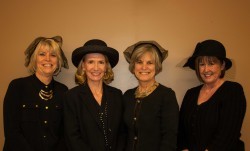 Four authors, published by Deeds Publishing, a Georgia-based publisher, have banded together to promote reading among both men and women after finding themselves alone at book talk after book talk, their husbands like other men rarely reading fiction and even more rarely participating in book clubs or attending book talks. They dubbed themselves “The Book Widows”.
Four authors, published by Deeds Publishing, a Georgia-based publisher, have banded together to promote reading among both men and women after finding themselves alone at book talk after book talk, their husbands like other men rarely reading fiction and even more rarely participating in book clubs or attending book talks. They dubbed themselves “The Book Widows”.
Valerie Joan Connors, author of In Her Keeping. Shadow of a Smile and A Promise Made
Susan Jimison, author of Dear Mark and Through the Eyes of a Tiger
Connie McKee, author of The Girl in the Mirror
Rona Simmons, author of The Quiet Room and Postcards from Wonderland
April 3, 2016
The Writing Life #1
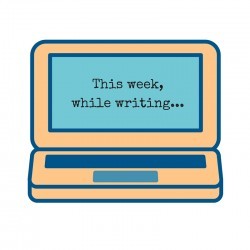
This week, while writing down the nuggets for book four, I realized I wanted to keep track of how the year progresses as I go from that nugget to polished book ready for my editor. Hence, the fancy logo-graphicy thing that is meant to entice me to write what’s been going on in the week, and then entice YOU to read it and tell me about YOUR week!
Here’s where the optimist in me comes out, as I don’t have a contract for book four, although I’ll write it as if I do, until I do. The reason I’m thinking about book four, is because—cue the trumpets—I turned in book three, currently titled Left To Chance! Here’s the “high concept” elevator pitch that’s a result of one of the lessons from the Don Maass Workshop I recently participated in through WFWA. (I am a Don Maass groupie, as well as a workshop junkie, even now. Just ask my critique partner, she’ll tell you–as she rolls her eyes.)
Six years after running out on her lifelong best friend’s funeral, Teddi Lerner returns to her hometown to reconcile with the people, places, and memories she abandoned, including her best friend’s twelve-year-old daughter, who teaches Teddi to face her grief head-on, and to open her heart.
I’m really proud of the book, with which I tried new things and stretched my writing muscles, which only makes me want to do that even more so with book four.
What makes me even more excited about book four is that it’ll be my second project with Browne & Miller Literary Associates and since they’re based in Chicago, we are able to get together somewhat regularly. We strategize, we brainstorm, we drink champagne, and eat sushi. Most of all we figure out what’s next for me and how to get there.
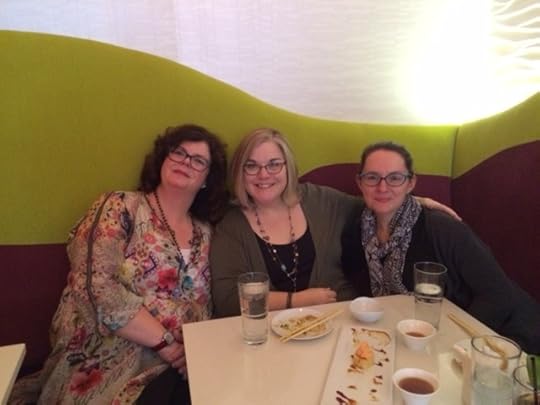
Danielle Egan-Miller and Joanna MacKenzie, my dream team from Browne & Miller Literary Associates, LLC. Missing from photo is Abby Saul, equally dream-teamy.
But I didn’t go to this meeting empty handed. I brought my notebooks. You know, the ones where I’ve been hoarding ideas for future books, character names, settings, news stories that sparked my interest and imagination. Those notebooks combined with the realization that my best stories bubble up from inside and are important to me. I think (but don’t know for sure, you tell me) that some authors write great stories about ideas or people who interest them and inspire them. While writing Left To Chance, I realized that the basis for a story of mine has to be something that means a lot to me fundamentally. The characters and plot are all part of that, and not everything or everyone in a book is deeply personal, not at all. That would be exhausting. That would not be fun for me. I love writing fiction for the MAKING SHIT UP part of it, for the whimsical parts, for the parts that float down and let me grab them and stick them in the story.
I’ve spent a good amount of time this week with names. Sometimes they just arrive, as did the name of the main character for Left To Chance, Teddi Lerner. She appeared fully formed, name and story in tact, as did her best friend, Celia. All the other names in the book have been tweaked and changed until they were right. But this time the names have not accompanied the main characters, although I have lists, which thanks to the internet are easy to compile. This time I’m set on the names of a few secondary characters, but they’re not main characters at all, nor are they trying to insist upon it. I think as I write, the few names that appeal to me will whittle down until there is no option except the one that’s left behind—therefore rocketing to the forefront.
Right now my new main character is a mid-thirties woman (new territory for me). The name Hannah keeps pushing forward, but I feel like it’s overused, so I push back. I write a line or two with another name, and then another. Who’s in charge here anyway? Time will tell.
This week when I wasn’t writing, I was (and will be again today) finishing up some freelance editing projects both for my own editing extravaganza (the link is below) and for writers I edit through other companies. I also finished reading a marvelous book for a blurb, it’ll be out in September, and I’ll tell you more about it then. Just know, you’ll be in for a treat.
As I head into the upcoming week, I’m going to devote some time to research for book four, as I’m testing the waters for a very small historical component, and then I’ll spend about thirty minutes a day just writing to see what happens with Hannah or Whoever She Is. I’ll keep you posted!
In my non-writing life I spent an inordinate amount of time complaining about SNOW, and Power Puff Girling myself. My daughter was a huge fan of the show when she was little, and this was a good mix of nostalgia and amusement for her (and me) when I sent her multiple versions of me as a Power Puff Girl. Of course, she returned the favor! Hmm, who’s who?
Have a great week!
Amy xo
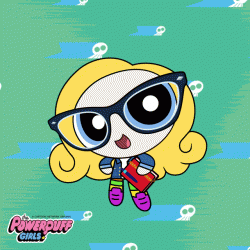
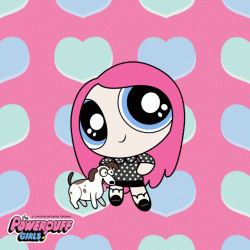
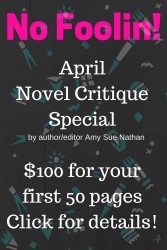
The Writing Life

This week, while writing down the nuggets for book four, I realized I wanted to keep track of how the year progresses as I go from that nugget to polished book ready for my editor. Hence, the fancy logo-graphicy thing that is meant to entice me to write what’s been going on in the week, and then entice YOU to read it and tell me about YOUR week!
Here’s where the optimist in me comes out, as I don’t have a contract for book four, although I’ll write it as if I do, until I do. The reason I’m thinking about book four, is because—cue the trumpets—I turned in book three, currently titled Left To Chance! Here’s the “high concept” elevator pitch that’s a result of one of the lessons from the Don Maass Workshop I recently participated in through WFWA. (I am a Don Maass groupie, as well as a workshop junkie, even now. Just ask my critique partner, she’ll tell you–as she rolls her eyes.)
Six years after running out on her lifelong best friend’s funeral, Teddi Lerner returns to her hometown to reconcile with the people, places, and memories she abandoned, including her best friend’s twelve-year-old daughter, who teaches Teddi to face her grief head-on, and to open her heart.
I’m really proud of the book, with which I tried new things and stretched my writing muscles, which only makes me want to do that even more so with book four.
What makes me even more excited about book four is that it’ll be my second project with Browne & Miller Literary Associates and since they’re based in Chicago, we are able to get together somewhat regularly. We strategize, we brainstorm, we drink champagne, and eat sushi. Most of all we figure out what’s next for me and how to get there.

Danielle Egan-Miller and Joanna MacKenzie, my dream team from Browne & Miller Literary Associates, LLC. Missing from photo is Abby Saul, equally dream-teamy.
But I didn’t go to this meeting empty handed. I brought my notebooks. You know, the ones where I’ve been hoarding ideas for future books, character names, settings, news stories that sparked my interest and imagination. Those notebooks combined with the realization that my best stories bubble up from inside and are important to me. I think (but don’t know for sure, you tell me) that some authors write great stories about ideas or people who interest them and inspire them. While writing Left To Chance, I realized that the basis for a story of mine has to be something that means a lot to me fundamentally. The characters and plot are all part of that, and not everything or everyone in a book is deeply personal, not at all. That would be exhausting. That would not be fun for me. I love writing fiction for the MAKING SHIT UP part of it, for the whimsical parts, for the parts that float down and let me grab them and stick them in the story.
I’ve spent a good amount of time this week with names. Sometimes they just arrive, as did the name of the main character for Left To Chance, Teddi Lerner. She appeared fully formed, name and story in tact, as did her best friend, Celia. All the other names in the book have been tweaked and changed until they were right. But this time the names have not accompanied the main characters, although I have lists, which thanks to the internet are easy to compile. This time I’m set on the names of a few secondary characters, but they’re not main characters at all, nor are they trying to insist upon it. I think as I write, the few names that appeal to me will whittle down until there is no option except the one that’s left behind—therefore rocketing to the forefront.
Right now my new main character is a mid-thirties woman (new territory for me). The name Hannah keeps pushing forward, but I feel like it’s overused, so I push back. I write a line or two with another name, and then another. Who’s in charge here anyway? Time will tell.
This week when I wasn’t writing, I was (and will be again today) finishing up some freelance editing projects both for my own editing extravaganza (the link is below) and for writers I edit through other companies. I also finished reading a marvelous book for a blurb, it’ll be out in September, and I’ll tell you more about it then. Just know, you’ll be in for a treat.
As I head into the upcoming week, I’m going to devote some time to research for book four, as I’m testing the waters for a very small historical component, and then I’ll spend about thirty minutes a day just writing to see what happens with Hannah or Whoever She Is. I’ll keep you posted!
In my non-writing life I spent an inordinate amount of time complaining about SNOW, and Power Puff Girling myself. My daughter was a huge fan of the show when she was little, and this was a good mix of nostalgia and amusement for her (and me) when I sent her multiple versions of me as a Power Puff Girl. Of course, she returned the favor! Hmm, who’s who?
Have a great week!
Amy xo



March 30, 2016
Guest Post: Do You Need An MFA? Author Erin Celello Shares Her Experience, Thoughts, And Plans
Here’s something you might not know about me. I’m a workshop junkie. But if I were younger when I realized I wanted to write fiction (I was in my forties), I think I’d have gone to grad school for an MFA— but I’m not, and I didn’t. Maybe I wouldn’t be where I am now—maybe I’d be farther along in my career. Maybe I wouldn’t have followed my heart to The Glass Wives, The Good Neighbor, and Left To Chance.
I’ll never know.
We all take different paths in writing lives. My friends Erin Celello and Ann Garvin have founded an “immersion writing experience for anyone with an MFA under their belt or a book under their bed.”
Whether this is up your alley or not, Erin’s story is inspiring and admirable. It will make you think about your own journey, and there is never anything wrong with that.
Amy xo
What I Know Now
by Erin Celello
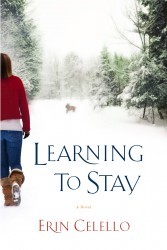 I remember the first day I met my husband.
I remember the first day I met my husband.
Okay, that’s sort of a lie. Apparently, we had met once before. Maybe twice. But, details. In any case, I remember the first time I remembered meeting him – the first time I sat and talked with him. He was waiting for my officemate to return from a meeting. He was handsome and smart and charming and was immediately impressed by the fact that I had an MFA. I was impressed by the fact that he knew what an MFA was.
That night, I went home and called one of my best friends from graduate school. I told her that my MFA had, in fact, netted me an actual perk. We both laughed. I was only partially kidding.
My MFA experience was wonderful, don’t get me wrong. I learned a great deal: writing on deadline and for an audience; forming (mostly good) writing habits; looking under the hood of a story to see how it hung together; understanding the sorts of things in my writing people responded to, and those that they didn’t.
But when I emerged, fancy bound thesis and degree in hand, I still didn’t know what I didn’t know.
I started querying my “novel,” which was really an overgrown character sketch. I was, very rightfully, rejected at every turn. Renowned literary agent Noah Lukeman did me the kindest of favors by nicely, but sternly, telling me that I was nowhere near being ready to query. And that my query itself needed work. Perhaps lot of it.
I spent the next eight years – eight! – buying out whole bookstore shelves on craft, plot specifically, and reading about how to get published. I spent more time than I’d like to admit (at work) binge-reading the blogs of literary agents, desperately seeking that magic bullet of advice that would land me in the good graces of one of them. I started two writing groups and sought out yet another. I read and outlined best-selling books that succeeded where I seemed to stumble as a writer (again, plot). I attended conferences and stalked the published writers there. I asked how they got their agents and hoped for a brokered introduction which would lead directly to representation and my book selling for a big, fat advance or, even better, at auction (shockingly, none of those scenarios came to pass). I put together a spreadsheet of more than 100 names and methodically worked my way through querying them. By the time I got The Call, I was elated, but also exhausted.
Even then, though, throwing those two precious words, “my agent” around like candy at a parade, there was so much to learn: the particular obstacles involved in netting a two-book contract, the role and expectations of editor versus agent, how – or if – to set up a book tour, the best ways to pitch your book to booksellers, how to best leverage social media to gain exposure and sell books, why you should buy your books from a local store instead of requesting a box from your publisher, or how, as soon as you get used to saying “my publicist” without an air of wonder at the fact that you have a publicist, said publicist will likely disappear into the literary ether.
Why am I telling you all of this? Because the 20-some year-old me would have wanted to know that there were other writers out there wondering many of the same things as I was: why does it feel like everyone else is having success when I keep getting rejected? Why does this feel so lonely and confusing? Why is getting from finished to published a better-guarded secret, it seemed, than the nation’s nuclear codes.
I’m telling you this because each step forward, it seems for me, was like stumbling around blindfolded – groping in the dark like the proverbial blind man touching an elephant. There were book doctors and writing workshops and pitch conferences, low-res MFA programs and beta readers and residencies and contests. Sorting it out, taking advantage of it all, was time-consuming and overwhelming.
You know that age-old advice: “Write the book you want to read?” Well, that’s good stuff. It’s worked well for me so far. And so, with the help of my friend, fellow author and educator, and all-around awesome person, Ann Garvin, we decided to take that advice a step further. We created the very thing that our aspiring-writer selves wished and longed for and needed.
 It’s called The Fifth Semester – “for anyone with an MFA under their belt or a book under the bed” – and we’re unveiling it here on Women’s Fiction Writers first.
It’s called The Fifth Semester – “for anyone with an MFA under their belt or a book under the bed” – and we’re unveiling it here on Women’s Fiction Writers first.
We decided that writing a book should be the hard part. But the road from finished to published? That should be, if not smooth, at least paved and well-lit.
Publishing can be a wild place these days, with almost daily upheaval, change, and innovation. So it helps to have real, live people to go to who have been there, who can mentor you through the process. In the lonely, uncertain years leading up to publishing my first book, that’s really what I pined for at conferences and through blogs: mentorship, camaraderie, community.
So, to my twenty-some year-old, aspiring-author self, I say: “Hold tight…I’m coming.” And to anyone else out there looking for the very same things that I was, way back when, good news: (most of) the hard work’s been done, (a lot of) lessons have been lived and learned, and this thing has been built. We hope you’ll come. We’ll hope you’ll join us.
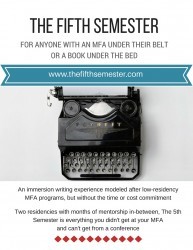
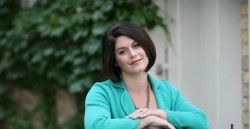 Erin Celello is the author of the novels, Miracle Beach and Learning to Stay. She was born and raised in Michigan’s Upper Peninsula and earned B.A. in English from St. Norbert College. Not knowing what else one does with an English degree, Erin set out for law school but never quite got there. Instead, she headed back north to Marquette, Michigan, where she received an MFA in fiction writing from Northern Michigan University and a PhD in snow shoveling.
Erin Celello is the author of the novels, Miracle Beach and Learning to Stay. She was born and raised in Michigan’s Upper Peninsula and earned B.A. in English from St. Norbert College. Not knowing what else one does with an English degree, Erin set out for law school but never quite got there. Instead, she headed back north to Marquette, Michigan, where she received an MFA in fiction writing from Northern Michigan University and a PhD in snow shoveling.
Eventually, Erin landed in Madison, Wisconsin, where she lives today with her husband, two young sons, and two unruly Vizslas. She is an Assistant Professor in the Department of Languages and Literatures at University of Wisconsin-Whitewater and member of the Tall Poppy Writers collective. Visit erincelello.com, tallpoppies.org, or thefifthsemester.com for more information.
March 29, 2016
WFW Is Named One Of Writer’s Digest’s Best Websites For Writers 2016
WHEE! Here we go again! Women’s Fiction Writers has been named one of Writer’s Digest’s 101 Best Websites for Writers 2016! Thank you for helping to celebrate our community! (And, I’m a hub! Who knew?)

To celebrate this, and the fact that I’ve handed in book #3 to my editor, as well as the impending arrival of Spring, I’m offering an editing special deal for the month of April! Are you a writer looking for feedback on your first 50 pages? Check it out by clicking here!
March 23, 2016
Guest Post: We Need Diverse Books in Women’s Fiction Says Author Alessandra Harris #WeNeedDiverseBooks
When I started writing fiction it was important to me to portray single moms in a non-stereotypical way—meaning, not being rescued by anyone but themselves (if rescuing was necessary at all). It was important for me to portray the workings of a single-mom family in a way that I knew others didn’t understand. I knew this from being a single mom, and from the assumptions made and stupid-ass insensitive things said to me, and in my presence, in the past fourteen years. Don’t ask me to list them, we’d be here all day. It was important to me to illuminate the world I knew best for anyone interested enough to read it, to not beat anyone over the head (no matter how tempting), but to show a culture of family living that was new to many people.
So, when #weneeddiversebooks became a movement, in my own way, I felt like I understood.
It’s true that I’m white and I’m Jewish, and neither are underrepresented in fiction, specifically women’s fiction. But still, I had inklings of how it could feel to never see yourself in the books you read. Craziness!
Another crazy thing is that I’ve always read diverse books by diverse authors. Maybe I did it wrong, because I never did so intentionally. About twenty years ago I handed a stack of recently read books to my then-mother-in-law. A week or so later she informed me I’d given her books by all black authors. I knew, but hadn’t thought anything of it.
All I have to do is think of some of my favorite authors and all-time favorite books, and there are authors of color among them — Renee Swindle, Tayari Jones, Maya Angelou, Gaile Parkin, Margaret Dilloway — and that’s without going through my physical and virtual bookshelves. If you haven’t read these authors, I encourage you to do so!
Yes, we’re going there today on WFW, with the help of the insightful author Alessandra Harris (don’t you just love the cover of her forthcoming novel?).
Please share your thoughts in the comments, and welcome Alessandra to WFW!
Amy xo
P.S. I was lucky enough to meet Ellen Oh, the CEO and President of We Need Diverse Books, in October 2015 at the James River Writers Conference.

#WeNeedDiverseBooks in Women’s Fiction, Too!
by Alessandra Harris
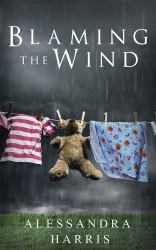 Toni Morrison said, “If there’s a book that you want to read, but it hasn’t been written yet, then you must write it.” Her words are important at this moment with an increasing focus on diversity – or the lack thereof – in publishing these days. But I do not believe the answer to the problem is for us all to write about people of color, the LGBTQIA community, or disabled people. We are all diverse in our own way, and the way to answer the call to diversity is to hone in on our own individuality and write the stories that only we can tell while supporting underrepresented voices.
Toni Morrison said, “If there’s a book that you want to read, but it hasn’t been written yet, then you must write it.” Her words are important at this moment with an increasing focus on diversity – or the lack thereof – in publishing these days. But I do not believe the answer to the problem is for us all to write about people of color, the LGBTQIA community, or disabled people. We are all diverse in our own way, and the way to answer the call to diversity is to hone in on our own individuality and write the stories that only we can tell while supporting underrepresented voices.
Though lack of diversity seems to be a “new issue” for some people, that’s not the case for people of color, whether black, Asian, Latino, indigenous, or immigrant. The majority of books, TV shows, and movies feature people that are not like us. At an early age, I knew I was different: the color of my skin, my hair, the shape of my body. I stood out from my mostly white peers at a Catholic school in a county of the San Francisco Bay Area with a population that is only two percent black.
I also learned on a very personal level about injustice, inequality, and racism from the struggles my family overcame. My maternal grandfather, Dennis Brutus, was a “colored” activist, professor, and poet who served time in the same prison as Nelson Mandela due to his opposition to the apartheid South African regime. He always emphasized that it is each person’s duty to fight for justice and opportunity for all people.
That’s why the outcry for diverse books resonates with me. As an educated, married, African American woman living in Silicon Valley, I’ve noticed the lack of contemporary women’s fiction that features women of color. And though I love the characters that are in many popular novels, I often feel like I’m back in grade school, an outsider looking in on the lives of privileged, wealthy, women whose lives are very different from mine.
So, I essentially did what Ms. Morrison suggested; I wrote my own book. My first novel tells the story of two couples: one African American the other Caucasian struggling with issues that are real to me: family drama, fidelity, health, and finances. I didn’t set out to write a diverse book then check off all the boxes as I went along. But my stories naturally feature the diversity that I live in. After all, the San Francisco Bay Area has people from all ethnicities, lifestyles, and economic and social backgrounds.
But writing a diverse book involves risks. I’ve wondered, will white people mind that I’ve written from their point of view? I haven’t tackled issues specifically relevant to the black community, so will black people still embrace the story? I also took risks writing about experiences I’ve never personally had. I did my research and tried to portray these issues with sensitivity and respect. But often the stories that call to us force us to move beyond our comfort zone.
It’s natural to want to fit in and be part of the crowd, so we often hide our differences and shy away from discussing what sets us apart. The call to diversity asks each of us to do just the opposite in our writing. What makes us unique? What passions do we have? How do our beliefs shape us? What experiences, good or bad, have left indelible marks on our lives? How has our environment, community, and culture made us who we are? When we answer these questions, we tap into the part of us that is unlike anyone else. That’s also diversity.
As writers, our duty is to write the stories that call to us. If you’re being called to write from a cultural point of view that is not your own, that has its own challenges. The second novel I wrote was from the point of view of an African American woman married to a Mexican man in deportation proceedings in the United States. I ended up shelving the novel because I didn’t feel like I authentically represented Mexican culture, and it wasn’t my story to tell. When you’re writing from outside of your experience you have to research thoroughly, dialogue with the people you are portraying, and get beta readers from that viewpoint to give you honest feedback. And though I did that, I still didn’t feel that I was able to go beyond clichéd, stereotypical characters.
However many skilled writers that have written outside of their cultural perspective have had a profound impact. At a time during slavery when some white colonies made it illegal for blacks to read and write and illegal to teach those skills to black people, Harriet Beecher Stowe, a white woman, wrote Uncle Tom’s Cabin that went on to becoming the second-bestselling novel of the 19th century. The anti-slavery novel depicted the brutality that enslaved Americans faced and shed light on the horrors occurring in the South. Though it also stirred controversy with its stereotypical characterization of blacks, most notably Uncle Tom, it was a powerful message supporting abolition.
The written word is still as powerful and necessary today. But while America is becoming more diverse, the publishing world hasn’t caught up. Lee and Low’s Diversity Baseline study reported that just under 80 percent of publishing staffs are white and 89 percent of reviewers are white. This translates to the dearth of underrepresented stories being published. So, while I don’t believe we should feel obligated to feature “other” people for the sake of jumping on the diversity bandwagon, I do think that we all need to understand the importance of having underrepresented stories being told.
If you are not writing a diverse story, what should you do? I would urge all writers to diversify their reading and experiences by including authors of color, authors that are not straight, authors with disabilities. We have access to books from all corners of the world, and broadening our reading helps us connect, create empathy, and understand the plight of those who share the same world we all inhabit. Reading experiences from “others” also helps to support these writers and ensure that publishers and agents know the value of these stories.
Aside from reading, social media has created the ability to access people from all walks of life more easily than ever before. Friend, follow, and engage with people that are from underrepresented segments of the population, not to meet a quota, but to learn more about what’s important to them, their viewpoints, and their struggles.
We can’t deny the fact that we live in a diverse world, and everyone has the right to tell their stories. But only through buying, reading, and celebrating these stories do authors feel that they are actually heard. Once we begin writing stories that have yet to be told but are calling us, and reading diverse stories, the publishing industry and our world will be changed one book at a time.
This is the list of diverse books I would like to read. What’s on your list?
Chinelo Okparanta – “Under the Udala Trees”
Naomi Jackson “Star Side of Bird Hill”
Miriam Toews “All My Puny Sorrows”
Sejal Badani “Trail of Broken Wings”
Celest Ng “Everything I Never Told You”
website: weneeddiversebooks.org
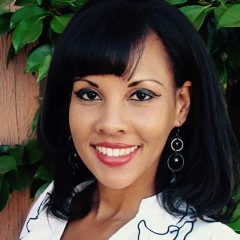 As a writer of women’s fiction, Alessandra Harris delves into real-life issues without shying away from controversial topics.After graduating from San Jose State, Alessandra volunteered as a contributing writer for CityFlight.com, a former online magazine geared toward the San Francisco Bay Area’s African American Community. Alessandra is the organizer of San Jose Writers, a diverse group of writers in the South Bay Area, California. At home, she enjoys spending time with her husband and four wonderful children.
As a writer of women’s fiction, Alessandra Harris delves into real-life issues without shying away from controversial topics.After graduating from San Jose State, Alessandra volunteered as a contributing writer for CityFlight.com, a former online magazine geared toward the San Francisco Bay Area’s African American Community. Alessandra is the organizer of San Jose Writers, a diverse group of writers in the South Bay Area, California. At home, she enjoys spending time with her husband and four wonderful children.Blaming the Wind delves into the lives of two couples grappling with secrets, temptation, and illness. Only time will tell if their vows are strong enough to hold them together. Coming April 19, 2016 from Red Adept Publishing.
Author Website: alessandraharris.net
Facebook: facebook.com/AlessandraHarrisAuthor
Twitter: @AlessandraH17
March 20, 2016
Guest Post: How To Write Women’s Fiction After Writing Romance Novels by Author Liz Crowe
Timing is everything, right? So when I received an email from author Liz Crowe about writing a guest post for WFW about writing women’s fiction after (and while) she was writing romance novels I thought it was a great topic. Drawing the faint or dark line between romance and WF is something many authors think about. Many books overlap that line as well. I asked Liz to share her unique experience so that YOU (and I) could know what she went through making this transition, how her writing career has evolved. I knew it would be interesting. What I didn’t know was that it would also be fun to read! I love the information Liz shares below and I love her voice.
As someone who’s about to hand in Book #3 to my editor by April 1st, this was a topic near and dear to my heart. While I’ll read a romance or a romantic novel on occasion, I am pretty sure I don’t want to write one. Why then is the main character in my new book tangled up in a quandrangle with three men? (I couldn’t just leave it at triangle, could I? No, I had to go all geometry on myself.) In The Glass Wives and The Good Neighbor, romance was a third-string player. That’s the way it needed to be in those books. But in Book #3 (the working title is Left To Chance) things are different. So, I was curious to see what Liz had to say—and I’m glad she shared her experience and insight!
What are your thoughts on writing women’s fiction and writing romance? How faint is the line in what you write? In what you read? Let us know in the comments! And please welcome Liz Crowe to WFW!
Amy xo
Love. Or Something Like It.
By Liz Crowe
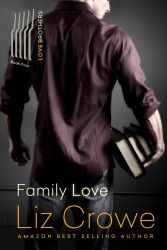 The Rules of Romance Novels are clear. The narrative must revolve 100% around the two characters involved—the Hero and his heroine (the H/h) and it must always (always always always) end happily. The HEA is paramount to a romance reader’s positive experience. Pretty simple, and easy to place anywhere: on earth, in space, back in time, in a werewolf pack, a witches coven, a vampire—something or another. But it must be About The Romance, keep all other elements as secondary, and it must end on a happy note with a little angst thrown in for good measure and satisfied fans.
The Rules of Romance Novels are clear. The narrative must revolve 100% around the two characters involved—the Hero and his heroine (the H/h) and it must always (always always always) end happily. The HEA is paramount to a romance reader’s positive experience. Pretty simple, and easy to place anywhere: on earth, in space, back in time, in a werewolf pack, a witches coven, a vampire—something or another. But it must be About The Romance, keep all other elements as secondary, and it must end on a happy note with a little angst thrown in for good measure and satisfied fans.
“Women’s fiction” is a much broader category with a single rule: a woman’s experience is at the heart and soul of the narrative. This woman can fall in and out of love, she can cheat or get cheated on (a Big Time Romance No-No, trust me I know), she can be young or old or in-between and it could also be set just about anywhere or any time. Her relationships with other women tend to loom larger than her relationship with a lover/spouse/partner. “A woman’s journey,” is how some publishers deem this genre. Pure and simple. Heavy on her growth, light on the hot-n-heavy romance. The genre can include, In My Humble Opinion the sub-category of “chick lit,” the Michelob Lite of women’s fiction—enjoyable yet somewhat forgettable.
I have learned this over the course of a few years writing and getting books published. But in the interest of full disclosure, I learned it the hard way. By making some fairly grievous errors and assumptions about how solid the line is between these two genres.
My publishing journey began way back in 2008. These were the dark ages when names like Hugh Howey, J.A. Konrath, Chuck Wendig, and yes, even E.L. James were barely known. Or if they were known it was within a small circle of fans as they worked on the foundations of whatever empire they were constructing.
I will admit to jumping right into the fray and not doing my homework first. When I read advice posts and hear speakers talking today to pre-published authors about “understanding your genre” I wince because I most definitely did not.
Liz (indignantly): “I am a Creative Being and I shall allow The Muse (his name is Hans, he’s hot and he likes beer but I digress) to guide me along the rolling green pastures to the pinnacle of literary success. Poo poo on your homework! This is not a business or school work. This shall be the fruit of my long-suppressed imaginative genius!”
Anyway, you get the idea. The starting-out author ego is a very large and puffy thing, like a delicious marshmallow cloud.
Bottom line here: I did not “get my genre.”
That didn’t stop me from writing, mind you, as you probably have deduced. Oh no. I dove into the really deep end of the pool and didn’t come up until I had the beginnings of a trilogy—a “romance” trilogy. This later went on to become The Stewart Realty series, finish up at 9 books and with more Super Pissed Off Romance Fans than I can shake a stick at—mainly because the final, long novel Good Faith is very much not romance and is not even marketed as such but once again, I digress….
I also wrote and had a stand alone “Romance novel” published that shoved me even further down the road towards turning my fluffy white marshmallow ego cloud into a pit of tear-filled despair. “Paradise Hops,” while one of my favorite Liz novels, garnered me my first, but by no means my last, twitter hater/flame campaign.
I later realized that the tiny publisher who’d enabled me to essentially break every single rule of romance might very well have smothered my nascent writing career in the crib. But this power—this “non understanding” which later morphed into a bit of “up yours”—was a heady thing. Mainly because for a while I had decent sales for a rookie with a nano publisher behind her, to back up my assertion that “I break rules and f*ck you you if you can’t take a joke.”
Mind you, I do not ever plan to change any of these books in any way. They are what made me, what taught me an awful lot of lessons, and what allowed me to move into self publishing. Once I realized that it was not as difficult as all that and since I sold things for a living already, why not?
When I concocted my first self-published series, The Love Brothers, I really thought I would stay the romance course. I’d learned my lesson via haters, flamers, virtual poison darts etc. While I had a core group of loyal fans, I did not garner the sort of wild and rapt fangirls that so many other authors—the ones who’d done their homework—did. My fans skewed much older than your average romance reader. Many if not most of them were moms of adults, working full time or retired already, and while they’d admit to being titillated and “drawn back to reading” by the Empire of E.L. James, they were not inclined to keep toiling in that field, book-wise. They latched on to my Stewart Realty series, and a few stand alones including the Super Heretical “Paradise Hops,” and did not let go. Many of them are now excellent Beta Readers but there’s that digression thing again.
The Love Brothers, I decided, would go the full-on romance route. I’d recover my backsliding ways. I’d capture more readers. But by about halfway through book one, I had to step away from the keyboard and admit that I was once again writing something that simply did not cooperate. By the end of the original trilogy plus a novella about four stubborn-as-mules grown brothers in a mixed Irish/Italian heritage family in horse country Kentucky, I was satisfied with it, if a little worn out by these guys and their myriad f*ck ups. But I was intrigued by someone else—someone who was named time and again by my fans (some new ones now) as their “favorite.” Someone whose presence permeated the narrative in a necessary, loving, bossy, nosy way.
Their mother. “Lindsay Halloran Love.” Or “Mama Love” as she is known in the first books. And I did one other thing that lead me to my first women’s fiction writing experience. At the tag end of this messy tangle of testosterone, there’s a Love sister. Angelique, the girl Lindsay always wanted—except by the time she was born, things were not so great in the Love family and the relationship Lindsay dreams of with her only girl is sour almost from the very beginning.
At last! I had a relationship story! A mother/daughter novel! And I tried something else with it too—While Lindsay’s back story is told in my usual third person point of view, I let Angelique Love tell hers in first person. But I will admit it again: I did not really do my homework on the women’s fiction genre until after I’d written the first draft (nearly 100,000 words over the course of two hot summer months). I let that pesky Hans the Muse lead me through this story and He must have done His homework because what resulted is firmly in the “women’s fiction” genre.
Yes, you get a love story at first. Lindsay’s selfish obsession with one of her father’s employees results in this family—but their road to happiness is paved with unplanned pregnancies, leaky roofs, unpaid bills, arguments, stress, and the usual accoutrement of Actual Marriage. More than once, Lindsay questions her sanity and they do split up once briefly, but she soldiers on and thank heaven for that because those boys, husband included (and the girl, ultimately) come to rely on her as their true rock.
Angelique is a hot mess. She’s Amy Schumer Trainwreck times a thousand. She’s known nothing but being spoiled by her father and brothers, mostly ignored by her mother, and her young adult decisions and actions reflect that. But HER growth, HER journey is the absolute crux of this novel. The relationship between Angelique and Lindsay Love is The Story.
Almost all of my 30+ novels are side character heavy. All of my “h’s” (romance heroines) have friends, families and others they rely on and who play an active part in the narrative. So shifting the focus away from a central love story to the way women rely on their families and friends – and come to discover by trial and lots of error that your Mama may seem cold and distant but maybe you are too, so meet in the middle why don’t you? –was an easy shift for me.
Now, this is not to say that if you are writing your first or your fifth or your fortieth novel you should meander around and through the various genre forests until you find a campsite you’re comfy with. I don’t recommend that at all. I don’t anticipate that I will ever have the sort of E.L. James (or La Nora, Evanovitch or Sparks) Empire. For a lot of reasons, some of which are not pertinent to this post as such, but mainly because I wander around too much. I write what I want to read. In the process I believe concocted a pretty compelling series that cross-over readers like myself will enjoy. I have proof that old and new fans have both enjoyed and hated this series—a quick gander at the reviews for it will reflect that! However, the final novel Family Love, while it does not have the most reviews of the series, it has by far the most number of positive ones.
Do your homework. Understand your genre. Write your book the way you want and determine whether or not you are willing to break rules and piss people off A La Liz Crowe or not. But understand that this is a business and whether you pick romance, women’s fiction/chick lit, or even thrillers—Yes, I have one of these too and it’s nearing an epic number of rejections but I did my homework on it so I’ll keep trying—if you fully comprehend what a reader wants and expects, you will be successful. But it’s a long ride, so buckle up and hang on tight, be ready to accept honest critiques without hiding in the fluffy marshmallow ego cloud and enjoy!
![FullSizeRender[1]](https://i.gr-assets.com/images/S/compressed.photo.goodreads.com/hostedimages/1458756870i/18527605.jpg) Amazon best-selling author, mom of three grown-ups, Realtor, beer blogger, brewery marketing expert, and soccer fan, Liz Crowe is a Kentucky native and graduate of the University of Louisville currently living in Ann Arbor. She has decades of experience in sales and fund raising, plus an eight-year stint as a three-continent, ex-pat trailing spouse.
Amazon best-selling author, mom of three grown-ups, Realtor, beer blogger, brewery marketing expert, and soccer fan, Liz Crowe is a Kentucky native and graduate of the University of Louisville currently living in Ann Arbor. She has decades of experience in sales and fund raising, plus an eight-year stint as a three-continent, ex-pat trailing spouse.
Her early forays into the publishing world led to a groundbreaking fiction subgenre, “Romance for Real Life,” which has gained thousands of fans and followers interested less in the “HEA” and more in the “WHA” (“What Happens After?”). More recently she is garnering even more fans across genres with her latest novels, which are more character-driven fiction, while remaining very much “real life.”
With stories set in the not-so-common worlds of breweries, on the soccer pitch, in successful real estate offices and at times in exotic locales like Istanbul, Turkey, her books are unique and told with a fresh voice. The Liz Crowe backlist has something for any reader seeking complex storylines with humor and complete casts of characters that will delight, frustrate and linger in the imagination long after the book is finished.
Don’t ever ask her for anything “like a Budweiser” or risk bodily injury.
Blog (not just books but lots of fun!)
Sign Up for Liz Newz and get two full length novels as part of my Real (Estate) Romance series. These books are not available at any ebook retailers. I just wrote ‘em, got ‘em edited and am giving ‘em away!
Wattpad where you can also read my new ongoing chick lit serial novel, Lady Balls!
Family Love
Ostensibly Book 4 of The Love Brothers but can be read as stand alone or as lead in to the series.
A wealthy horse farmer’s rebellious daughter meets a sultry stable hand…but the result is far from the average tale of forbidden romance.
The epic saga of one family’s turbulent beginning is entwined with the challenge of a mother’s relationship with her youngest child, the longed for only daughter, Angelique. But a secret Lindsay Halloran Love has kept for years could rip the tight-knit clan apart for good.
When novelist Aiden Love publishes his parents’ story he has no idea the trauma it will cause. This mash up of New Adult Romance and Women’s Fiction will satisfy your craving for the REAL “backstory” with a twist that is guaranteed to leave you, and the entire Love Family, breathless with shock.
Available on Amazon. Free if you’re a Kindle Unlimited member.
March 9, 2016
Guest Post: Lynda Cohen Loigman’s Tips For Timelines and Storytelling
Lucky me! I read Lynda Cohen Loigman’s debut novel, THE TWO-FAMILY HOUSE well over a year ago. Lucky you! THE TWO-FAMILY HOUSE hit bookstores and bookshelves just two days ago so now you can read it too!
I was so taken with this story that I think about it even now. The story spans two decades and follows two families through tragedy and triumph. One of the things that fascinated me was the timeline. My stories happen in a short period of time. The Glass Wives story occurred over a matter of months, as did The Good Neighbor. My third novel’s timeline spans a week. So, when an author is about to take me through characters’ entire lives, and do it well, I’m captivated.
As you will be with this stunning debut novel.
Please welcome Lynda Cohen Loigman to WFW and congratulate her on her debut novel!
Amy xo
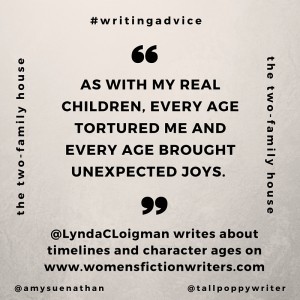
Timelines and Storytelling: My Favorite Age
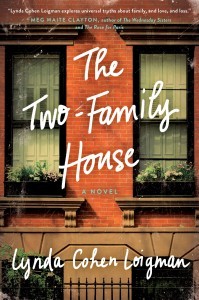 I first started thinking about the story for The Two-Family House sixteen years ago. I knew it would focus on a family secret, but more interesting than the secret itself would be the havoc it wreaked as the years progressed. After pondering structure and time lines, I finally realized that in order to tell the story properly, I would have to cover a period of at least twenty years. I was so intimidated by the prospect that I couldn’t bring myself to write a single word.
I first started thinking about the story for The Two-Family House sixteen years ago. I knew it would focus on a family secret, but more interesting than the secret itself would be the havoc it wreaked as the years progressed. After pondering structure and time lines, I finally realized that in order to tell the story properly, I would have to cover a period of at least twenty years. I was so intimidated by the prospect that I couldn’t bring myself to write a single word.
Perhaps the most daunting aspect of writing a “multigenerational family saga” (aside from the fact that it’s a bit of a tongue twister to pronounce) is writing about characters as they age. Think about the movies you’ve seen – in order to show the passing of time, Hollywood doubles up on grey hair dye, prosthetic noses and fake wrinkles. Authentic aging is a tough thing to present, whether on the screen or on the page. Physical development, emotional growth, shifts in attitude and priorities – how could I possibly hope to achieve all that in a believable way over two decades? I had a fairly solid grasp of my adult character and the arcs they would follow, but what about their children? The idea of beginning a story with pregnancy and writing about unborn children from birth to adulthood seemed more overwhelming than raising my real children.
At some point, the need to write the story became stronger than my fear, and I began. Luckily, the structure I had chosen worked in my favor. Writing from the alternating viewpoints of the six main characters provided the opportunity to dig deeply into each individual’s thoughts and motivations. It allowed me to write about a single day or moment from multiple perspectives. Slowing down time helped me to control it, and I realized I didn’t have to talk about every day of every week of every year. I could skip to the most significant events. I could work my way through the calendar and stop only when I needed to.
Although I was beginning to grow more comfortable, I dreaded getting to the place in the story where the babies were born. When a movie takes a character from childhood to adulthood, multiple actors are often used. To write from the perspective of a child who grows up, I would need to use multiple voices, and blend them together seamlessly enough so that one whole person emerged.
Writing about Judith first was helpful. At twelve, she was already a fully formed person, complete with preferences, quirks and opinions. Because Judith is an “old soul” when we meet her, it wasn’t that much of a leap to take her from adolescence to her thirties. There was no doubt that Natalie, who we first meet at birth, would be more of a challenge to portray.
If you are a parent, you’ve probably had one or more strangers approach you at a park or grocery store and ask how old your child is. Whatever your answer – three months, one year or seventeen, chances are that someone has replied, “That is the best age,” or “That age is my favorite.” Even if you don’t talk to strangers, you’ve probably made a similar comment to a friend or family member at least once. Your six-month-old who can’t talk back? The sweetest. Your three-year-old who sleeps through the night? The best! Your ten-year-old who showers on her own and makes her own bed? What could be better? Every age has its delights and its challenges, because every age allows us to experience something new and different about our children.
Although The Two-Family House introduces Natalie at birth, the book is almost half over when the chapters written from her point of view appear. The reader hears from her at age five, eight, nine, thirteen and twenty-two. As with my real children, every age tortured me and every age brought unexpected joys. I found that in order to present each age in the most believable way, it was best to focus on the individual moment, and to stop myself from worrying about what was coming next. I had to write in linear fashion – year by year. It was impossible to skip ahead, because until I explored who Natalie was at age nine, I couldn’t understand who she would become by age thirteen.
Writing twenty-two years worth of story wasn’t easy, and I’m honestly surprised that it didn’t take me twenty-two real years to write. But now that it’s done, I’m so happy that I didn’t let my dread of covering such a long period of time stop me from writing the story. There is no question about it – time is a tricky element in a novel. Move too slowly, and the story will drag. Progress too quickly, and the character development will feel shallow and rushed. It’s hard to know whether I succeeded, but I’m proud that I made it through to the end.
Recently, someone asked me which age I enjoyed writing about most in the story. Did I prefer writing about Judith at twelve or Judith at sixteen? Was it more fun to describe five-year-old Natalie or Natalie at twenty-two? The fact is, the answer is the same whether children are fictional or real.
Every age is my favorite.
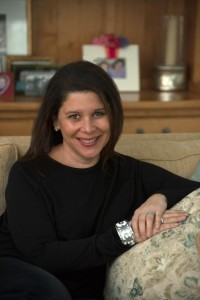 Lynda Cohen Loigman grew up in Longmeadow, MA. She received a B.A. in English and American Literature from Harvard College and a J.D. from Columbia Law School. She is a student of the Writing Institute at Sarah Lawrence College, and lives with her husband and two children in Chappaqua, New York. She is a failure at enforcing reasonable bedtimes. THE TWO-FAMILY HOUSE is her first novel.
Lynda Cohen Loigman grew up in Longmeadow, MA. She received a B.A. in English and American Literature from Harvard College and a J.D. from Columbia Law School. She is a student of the Writing Institute at Sarah Lawrence College, and lives with her husband and two children in Chappaqua, New York. She is a failure at enforcing reasonable bedtimes. THE TWO-FAMILY HOUSE is her first novel.
Find out more about Lynda and THE TWO-FAMILY HOUSE:
March 3, 2016
Win 6 Books By Women’s Fiction Authors & a 10-page manuscript critique!
In March 2011, I posted this as the very first WFW blog post. I had no one reading these posts but ME. But the universe answered my call. You answered.
WOMEN’S FICTION DEFINED (and yes, we’re still doing this today, aren’t we?)
With that post, Women’s Fiction Writers was born.
It had been a long time coming. I just couldn’t find what I wanted online. I had been a blogger since 2006, writing personal and writing-related posts, but I was looking for a place where I could connect with other writers who weren’t writing romance or thrillers or mysteries. I wanted a place where the advice was geared to me, where the books were like the ones I wanted to write, where the authors didn’t balk when I said there was no hero.
My wise author friend Karen Dionne said, “If you can’t find what you’re looking for, you’re going to have to create it.”
And six months later, I did.
Since then I’ve interviewed authors almost 2oo times, featured hundreds of books, and offered a few snippets of advice. In there I’ve sprinkled my personal journey and the publication journey of The Glass Wives and The Good Neighbor.
In 2015 WFW earned a “best website for writers” award from Writer’s Digest.
So, to celebrate, as you can see, we have new digs here! Isn’t it pretty? Isn’t it easy to read? My progressive lenses and I like it very much.
Nothing else will really change! I’m going to be featuring more writing posts, accepting more guest posts, and also, in the left sidebar () you can still sign up to get WFW by email, or search for posts, or see what else is new with me.
And today, because what’s a blogiversary without a party?–I’m giving away SIX novels by women’s fiction authors you already love or will love! The Rafflecopter entry is below. Some of the authors are also including a bit of swag with their book, but that’s up to them so you can consider it a surprise bonus! If you already have any of these books, you can give them as gifts!
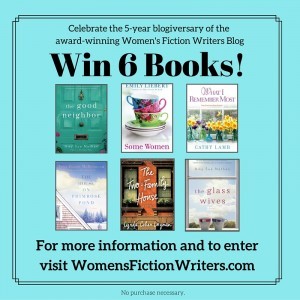
ONE winner in the USA will receive:
The Glass Wives and The Good Neighbor by Amy Sue Nathan (Yes, that’s me! You’ll receive both of my books! It’ll be like we’re besties!)
Some Women by Emily Liebert (Out in April from this bestselling author!!)
What I Remember Most by Cathy Lamb (I have read all of Cathy Lamb’s 10 books. She’s the only author I can say that about. What are YOU waiting for?)
The House on Primrose Pond by Yona Zeldis McDonough (A heartwarming story with a dual timeline — don’t you just love those?)
The Two-Family House by Lynda Cohen-Loigman (I read an early copy of this stunning debut and I still think about it!)
and
Also from me: a first-ten-pages critique of a women’s fiction manuscript (if the winner writes another genre, we’ll talk and see if I’m a good fit). If you win the books and you’re not a writer, let me know and I’ll choose another entry for that prize.
If you didn’t know, I freelance edit many genres, but women’s fiction remains my favorite. I’ll provide the kind of feedback I have given agents on manuscript when I read from their slush pile — what’s working, what could be working better, suggestions for making changes, and an overall assessment of the hook, characters, dialogue, and writing. I currently edit for Writer’s Digest as well as private clients.
Now celebrate! Enter below! Have a cookie! Pour wine! Eat chocolate! Send some of it to me!
But most of all, keep coming back!
Amy xoxo
Visit womensfictionwriters.com
Now, we’re new and improved and we can be found at
womenfictionwriters.com
Bookmark it! (Or just head over and sign up to receive posts via email!)
Amy xoxo








Women's Fiction Writers
- Amy Sue Nathan's profile
- 543 followers


